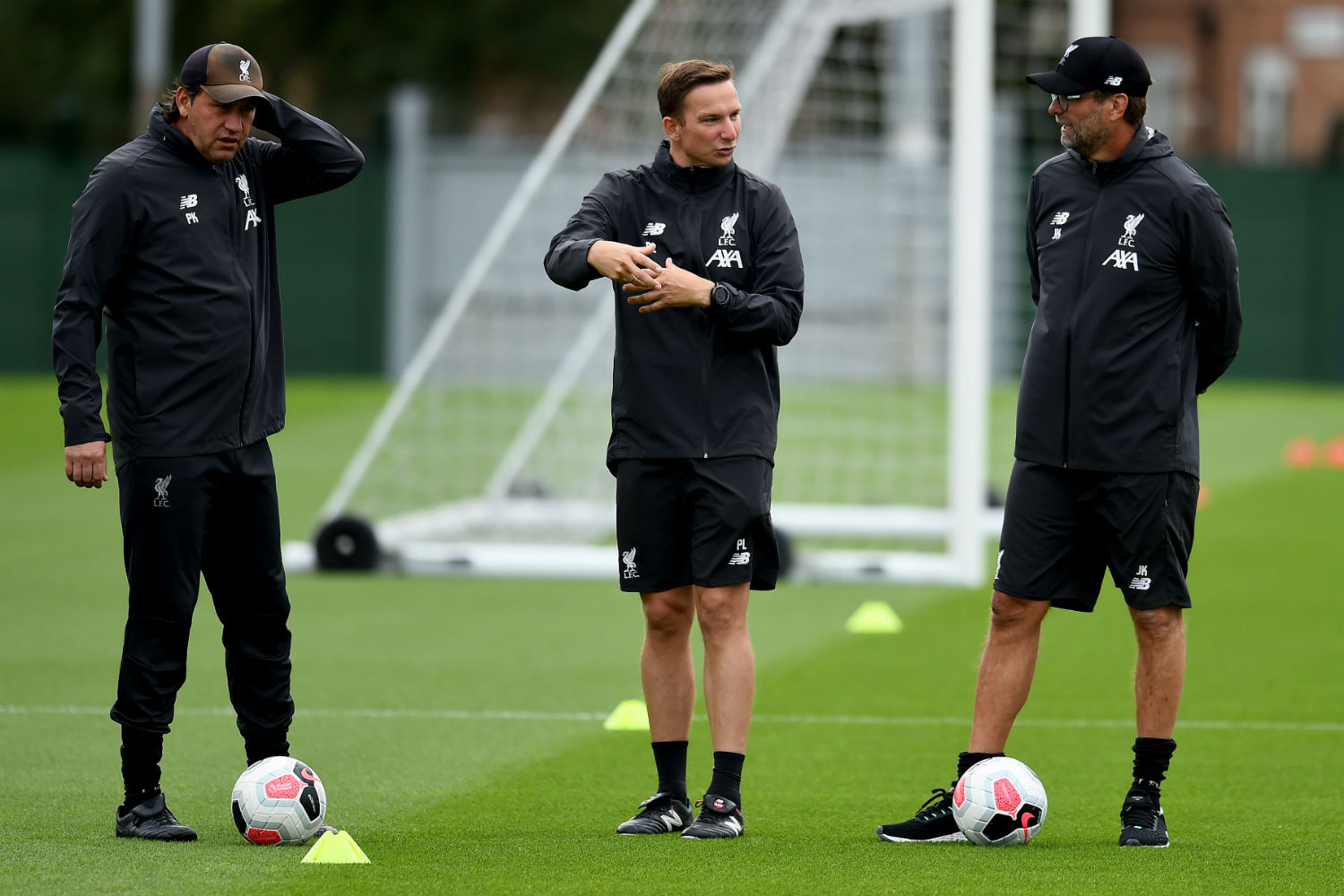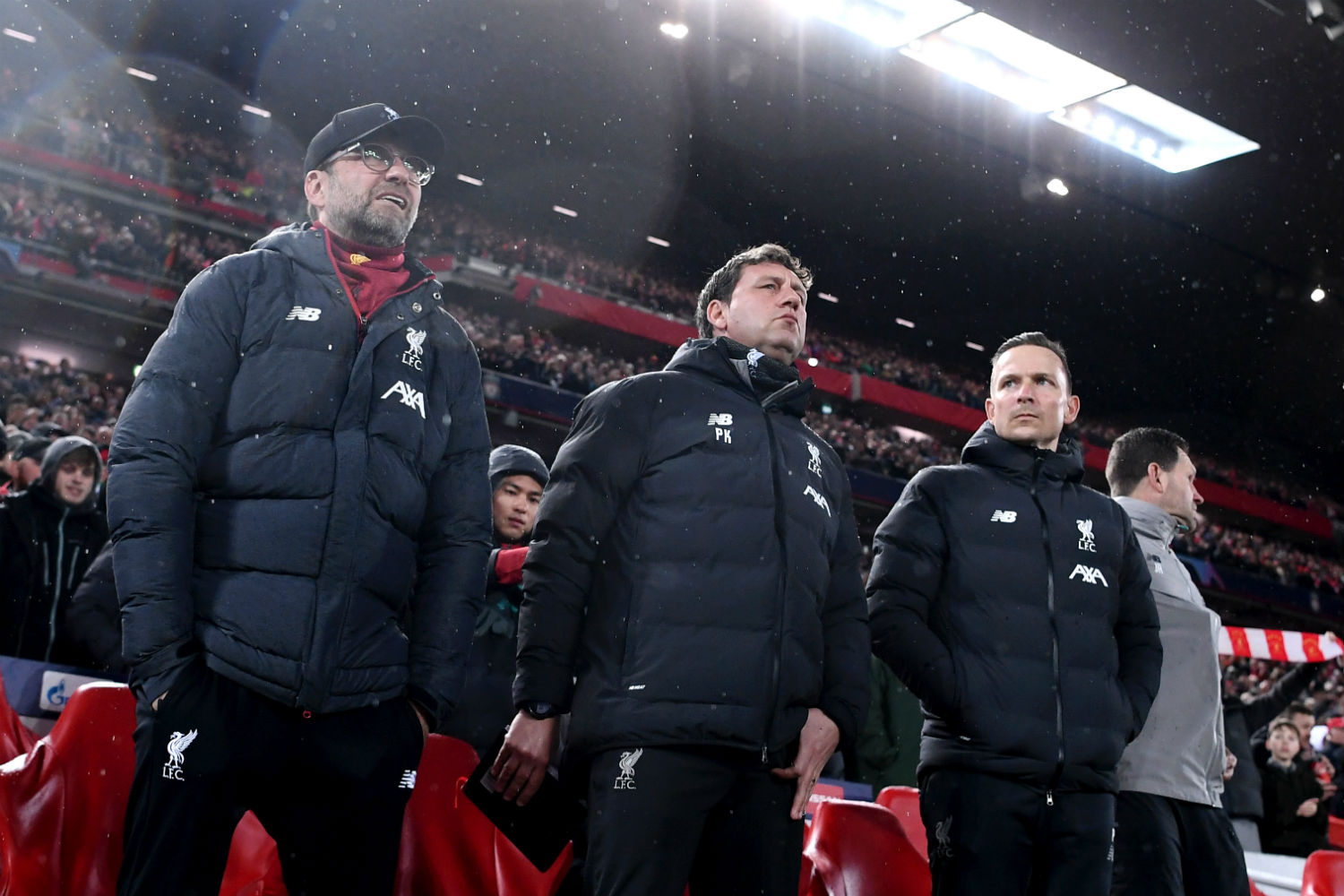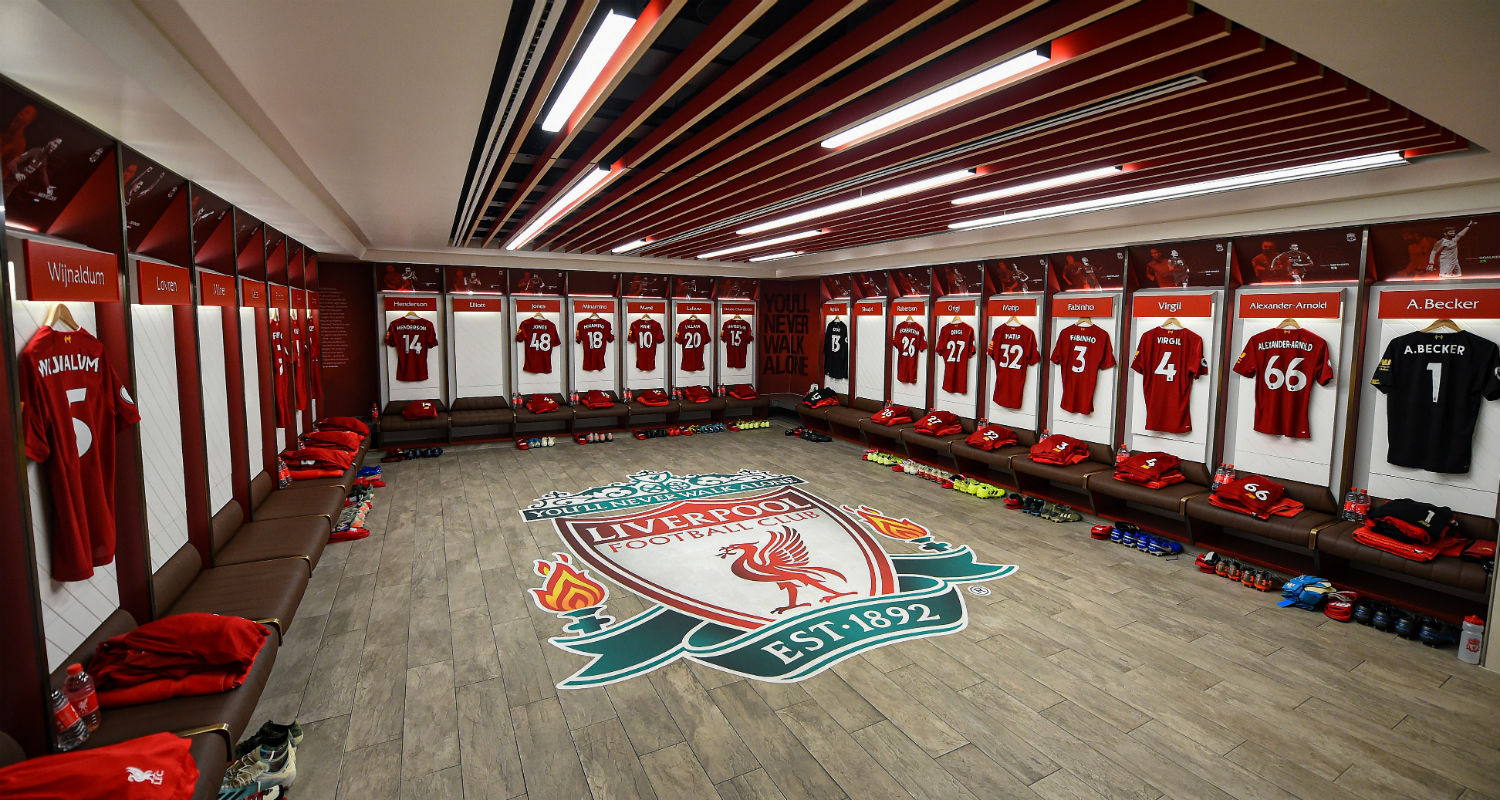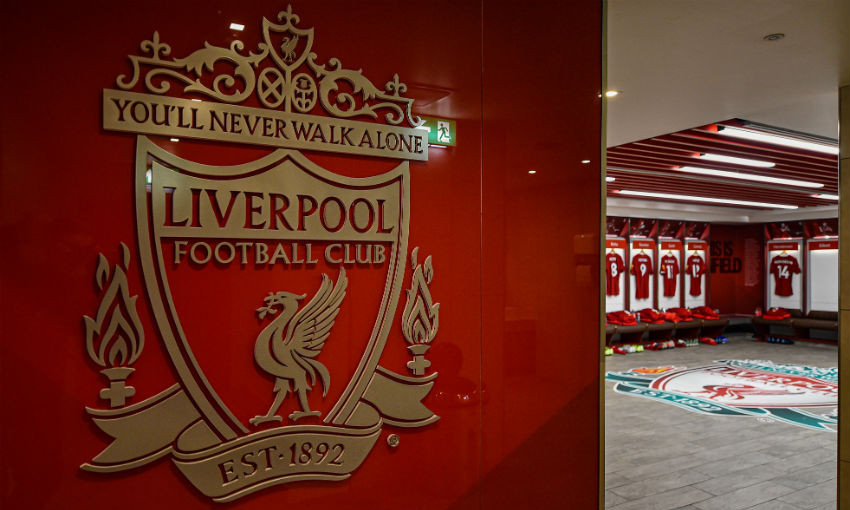Explained: What happens in Liverpool's dressing room at half-time
It is, Peter Krawietz explains, all about maximising a relatively miniscule amount of time.
“All the manager has in total for his talk is five or six minutes so you try to do it as quick, as short and as precise as possible,” Jürgen Klopp’s assistant informs Liverpoolfc.com.
“You really have to try to come to the point - you can’t make a movie that lasts 10 minutes and says, ‘Look here, look there’! No, it really has to be exactly what we want.”
Krawietz is describing what goes on behind the closed doors of the Reds’ dressing room at half-time and, more specifically, detailing his role in the process.
With support from analysts Harrison Kingston and Mark Leyland, Krawietz spends the first 45 minutes - well, 41 or 42 to be exact - of games identifying the tactical nuances, both positive and negative, that require the players’ attention at the break.
Klopp and fellow assistant manager Pepijn Lijnders do this too, of course, but Krawietz leads the visual aspect of the boss’ half-time routine, when up to three video clips are displayed on a big screen to support Klopp’s words.
Information gleaned from the first period supplements the detailed pre-match strategy that has been drawn up and implemented at Melwood.
In Krawietz’s words: “Half-time analysis is something like the end product of the whole process of analysing during the week.”

To paint a detailed picture of how the crucial few minutes available to Klopp and his coaches midway through games unfold it is, then, necessary to describe what goes on beforehand.
Krawietz does so forensically.
“Analysis always starts in the week and of course we have a look at what we can expect for the next game, what kind of opponent we will face, where are their strengths and what will be the things we have to do in that game,” the 48-year-old, a trusted lieutenant of Klopp at both Mainz and Borussia Dortmund prior to their move to Merseyside, begins.
“Our strategy is always the same: how we all know, we want to defend as compact as possible, we want to win the ball - which is already something special that we really put effort into, defending our goal by winning the ball, so that is always the same - and we want to play dominant if we are in possession.
“We search for ways to build up, to construct and to create chances so you have to see what are, and have a real look for, the solutions in how we defend, especially [regarding] this next opponent we face, and how we can create chances and how we can attack successfully with our skills.
“This is the process during the week. All the ideas we develop during the week of course have an influence on matchday and on our match plan, so there we already start to think about and to work on our solutions for the game.
“This process leads to our pre-match analysis meeting where we present it to the players, and there it is really important that we summarise all of our ideas in a proper way. That means not too long, but still very clear in our idea and very ‘coming to the point’ and showing exactly to the players what we want.
“For us and our philosophy, it’s very, very important that the players know about our ideas, that they follow our ideas, that everybody knows as exactly as possible how we want to play, how we want to create, where the solutions are and how they look.
“This is what we try constantly and this all leads to our match plan and our preparation for the game, and then of course we, the coaches, check constantly during the first half of the game if our plan is working, if our ideas are working, if the players find the solutions we wanted, if they are able to play in the way we want them to and in the way we agreed before.
“All this, and our performance and the performance of the opponent, leads to this half-time analysis.”

Pertinent game patterns flagged by Krawietz, Klopp and Lijnders are then relayed to the team at the interval, following a rapid decision-making meeting between the trio.
“You probably always see me with the book, writing things down,” the former continues.
“What I’m doing there is knowing exactly the situations where we do well or the situations where we have problems, where we don’t probably find the solutions. I notice situations where we have problems in defending so probably the opponent can create chances against us.
“Then we try to create an overview and shortly before half-time, with around 35 minutes played, I try on the bench, together probably with Pep and Jürgen as well, to get an idea on what are the talking points for half-time. Always the question is: ‘How can we help our players? What is necessary to do in the second half?’
“Is it to keep going like we do, so we realise our ideas are right and we just have to follow them, or we played very good so the information will just be ‘keep on going like this’?
“Or, we have problems so we have to think already about the solution or what we have to change in the second half. All these are considerations and for the solutions for the second half, I try to find pictures and clips which can help and support Jürgen’s half-time talk.
“As you can imagine, all the manager has is probably five or six minutes to talk and then it can be possible - it’s not like this in every game, but it’s possible - that we find the right clip to show the players in order to support the half-time talk of Jürgen.
“Three or four minutes before half-time, I leave the bench and go to the dressing room. I meet there Harry [Kingston] and Mark [Leyland] and I try to choose the right clips I noticed during the first half, I will have a look again to decide if this clip is the right one and if we can use it.
“Of course, because of the time pressure it’s stressful! You don’t have too much time, to be honest, so it has to be very precise. These are very intense minutes and then when I am happy that I have found a maximum of one, two or three clips which I think can help, my colleagues Jürgen and Pep come in and I present the clips and tell them what I think could help.
“Then we make a decision together, if we want to show it or not, and the question behind this decision is always orientated on the solution, or one solution, for the second half and if it is helpful for the players that we show it.
“We make the decision ‘yes’ or ‘no’, and if we decide to show the one or two or three, maximum, clips, then we are going to present and show these pictures to the players. This is the process that goes on.”

Do practical considerations - such as the potential difference in equipment and space at Liverpool’s disposal at away stadiums compared to Anfield - ever affect this well-oiled operation?
“Well, sometimes it’s an interesting challenge!” Krawietz admits, with a laugh.
“At Anfield everything is fine, our new dressing room is, as we all know, fantastic. We have everything we need and space so it’s a little bit easier.
“But like I said, winning football games is about solving problems, so our target is then to say we have the same standards wherever we are. It doesn’t matter where we are - which stadium, which town, which country - we try to do everywhere and every time the same.
“An away game with a small changing room probably makes this a bit more challenging, but in the end we want to do it everywhere. It might be a bit more difficult but it shouldn’t, and doesn’t, have any influence on how we work.
“It’s important that the way we work together, we can do everywhere at any time and this is what we try, of course.”

If the first half has gone to plan, the predominant theme of half-time is the reiteration of the pre-match strategy that has, so far at least, worked well.
“That’s one possibility,” Krawietz notes.
“Another possibility is that we don’t find solutions [in the first half] so then we try to give the players a picture to see the spaces where we can play, or where we can see what the opponent’s idea is to beat us in a defending moment.
“Of course, this shouldn’t be completely new information - hopefully at least something has gone right in the first half or it’s really difficult! The best way is to talk about the things you’ve talked about before: you just reinforce, repeat, show again, explain again.”
And regardless of the state of the game, Klopp’s talk is, without fail, always centred on improvements Liverpool can make, rather than focusing on the opposition.
“Of course: this is what I mean by ‘orientated on solutions’ - we don’t need to create new problems, we want to solve problems,” Krawietz states.
“You always have problems in a game, there are 11 other guys in different shirts to ours and they want to avoid everything that we do - they are the problem for us, of course!
“Then we talk about our ideas and our solutions and our way to play and it’s always really important that we don’t do half-time analysis just because we want to do it. No, we do it because we want to help and support our players to make it easier for them.”
Goals for or against in the closing stages of the first 45 minutes do not influence the information presented to the players at half-time.
“We don’t talk about things which probably happened with coincidence, we are looking at what happened systematically,” says Krawietz, who goes on to cite a game that was scoreless at the break when asked for a 2019-20 example of when half-time made a difference to the final outcome.
“One example could be our game at home against Southampton. Southampton played a real, real, real good game,” he recalls.
“The result in the end was 4-0 but this game was really close and Southampton obviously were prepared very, very well. We really had problems during the first half, they created chances and we didn’t play too well.
“The half-time talk was about ‘keep on going, keep on attacking like we did’. The simple message was ‘keep it up and then you will see it will happen’. To defend a little bit more compact was one piece of information, a second was to use certain spaces for great finishing situations.
“The message was that we were on the right way, but we didn’t try it hard enough so we have to keep it up and I believe in the 51st or 52nd minute, Ox scored a goal pretty similar to what we showed at half-time.
“From time to time this happens: you show something at half-time and immediately afterwards it happens. These are the happy moments for a coach, but still all the credit goes to the players, who are able to deal with this information and stick to it, and then have the skills and the quality and the technique to do it on the pitch.”

Indeed, Krawietz considers Liverpool’s current squad to have an exceptional capacity to manage tactical instruction.
“You can create the best ideas on a tactics board, they can be brilliant, but if the players are not able to cope with these ideas or are not able to realise them on the pitch, it doesn’t help!” he concludes.
“The smarter the players are, the quicker it goes in and it’s a massive advantage that we have now worked together for a while, with a few of the players for five years, so they know exactly what will come. They know we think in solutions and that we are talking about details. The more precise you can be in these situations, the better it works.
“This group of players are so together, they are so strong as a group, they keep improving constantly and they try to understand the information we give them and they are able to do it on the pitch.
“This is what we see every day, what we talk about every day: to have this quality, to be as smart and intelligent to take information and to do it then. If this is working, you are having a good time together because this is the process you want as a coach.
“You work, you analyse, you give information, you create ideas, all with the idea behind to help and support the players.
“And when you have players who can really deal with it and perform, this is a good combination.”



